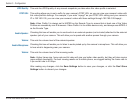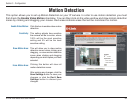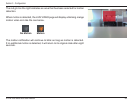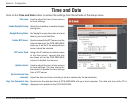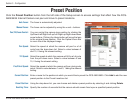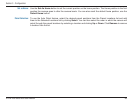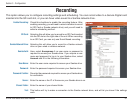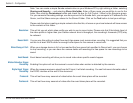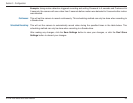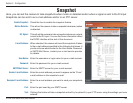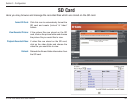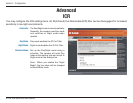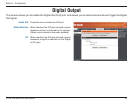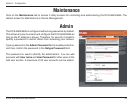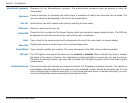
58D-Link DCS-5605/5635 User Manual
Section 3 - Configuration
Note: You can create a simple Samba network drive on your Windows PC by right-clicking a folder, selecting
, and selecting . Enter a Share name you would like to use for the
folder, then click the button and check the box for Full Control / Allow for the Everyone group.
For your camera's Recording settings, use Anonymous for the Samba Auth, your computer's IP address for the
Server, and the Share name you chose for the Shared Folder. Click on the button to test your settings.
Please note that when creating a simple network drive like this, all users on your local network will have access
to the contents of this folder.
This will let you set which video prole you wish to use to record video. Please note that if the bitrate (bps) of
the video prole is higher than your Samba network drive’s throughput, the recording’s framerate (FPS) may
be reduced.
You can use this setting to adjust how much free space must remain when recording. It is suggested that you
set this to at least 32M to allow for enough buffer space for the camera to record with.
When your storage device is full or has reached the free space limit specied in Record until, you can choose
to stop recording, or you can have the camera delete old recordings to free space for new recordings to be
saved.
Event based recording will allow you to record video when specic events happen.
Enabling this option will set the camera to record video when motion is detected by the camera.
When the camera receives a signal from its DI input, it will start recording. You can nd more information about
the DI/DO interface at the end of this document.
This will set how many seconds of video before the event takes place will be recorded.
This will set how many seconds of video after the event takes place will be recorded.
Resolution:
Record Until:
When Storage if Full:
Event Based:
Motion Detection Trigger
Recording:
Digital Input Trigger
Recording:
Prerecord:
Postrecord:




